
The Turtle Nesting Walk in Hobe Sound, Florida
It’s a sunny, humid, June morning. I kickstart my day by exploring Martin County, Florida on my own, at least until an afternoon rainy spell erupts. The highlight of my itinerary today is a turtle nesting walk in Hobe Sound. My ride, Nerissa, from the Martin County Tourism office, picks me up for dinner. I’ve been looking forward to this Turtle Nesting Walk from the moment I landed at Palm Beach International Airport.
Hobe Sound, Martin County Florida Turtle Nesting Walk
We take a leisurely drive through Jupiter Island, an extremely wealthy area of Martin County where celebrities, an ex-president’s family members, and athletes are known to have palatial homes that are well monitored and hidden behind high walls. It is an immaculate area, manicured and well maintained. We spy a cyclist or two getting some exercise. I can’t help but laugh over a couple of signs at the ends of driveways declaring these otherworldly retreats comical names that don’t match what’s hidden behind the trees and fences. My Shack. Beach Getaway. Summer cottage type names for houses that are mansions.
Lining one of these meandering roads on Jupiter Island are Banyan trees that arch over to greet each other in the middle forming a picturesque canopy with a southern feel. They are beautiful but hard to capture in a moving car.
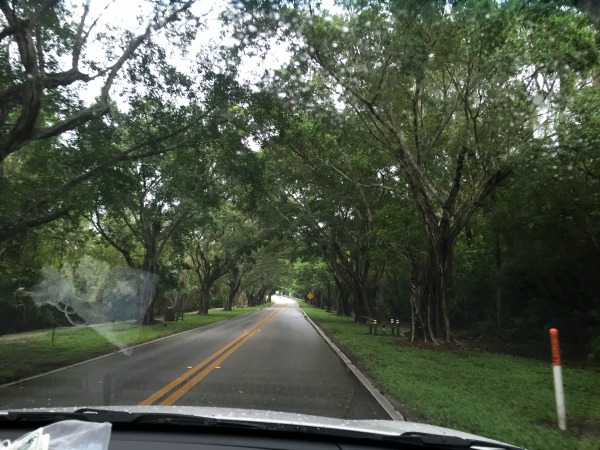
We are on our way to Hobe Sound National Wildlife Refuge, where two nights a week trained conservationists run a turtle nesting walk.

[tweetthis]TRAVELER TIP: You should do these walks with conservationists trained to safely do sea turtle walks. #LOVEFL [/tweetthis]

In Hobe Sound
Turtle Nesting Walk – educational for the entire family
We meet our group at 8 p.m. and are told these nights can be quite late. Be prepared to return home around midnight or potentially later. There have been some late nights recently, says the executive director of this non profit organization. Hobe Sound National Wildlife Refuge also offers day camps throughout the summer for children and the public can explore the trails during the day. There’s a small gift shop inside the main building. A few creatures and fish are inside small aquariums in a clean, well lit, space staffed with volunteers. If you spend much time in the region, you can buy a yearly membership to Hobe Sound and visit at your leisure.
We move to a different building for a brief presentation and the executive director gives us a lesson on sea turtles in the Florida area along with some history of the breeds that have been endangered or threatened. Turtles weigh hundreds of pounds depending on what type and how old they are..
The nesting process is perilous and quite an ordeal. When female turtles are ready to nest they travel hundreds of miles, waiting until after dark to drag their huge bodies onto the shore where they dig a two foot deep hole or egg chamber and lay 100 to 150 eggs. They then cover them over, pat the sand down and camouflage their nests, erasing any immediate impressions of where they buried the eggs. Then the female turtles leave. Two months later the eggs hatch and the tiny new sea turtles make their way to the shoreline on their own.
Night is the time when most sea turtles do their nesting. That is necessary in order to avoid predators and humans.
[tweetthis]Of the 7 types of sea turtles found worldwide 5 can be found nesting on Florida beaches. #discovermartin #LOVEFL[/tweetthis]
The five types of sea turtles that are common to these south east Florida beaches are: Loggerhead, Leatherback, Hawksbill, Green and Kemp’s Ridley, which is the smallest of the five. Adult sea turtles travel tens of thousands of miles. Most are migratory and despite having relatively small brains, will return to the precise beach where they were born to lay their eggs when they are old enough to lay.
After the presentation ends, we gather near our cars and drive to a pavilion by Jupiter Island Beach where we wait for word from the turtle spotters watching the beach and shoreline for activity. Around 10 pm one of the turtle spotters, a volunteer and conservationist, uses a walkie talkie to indicate she has spied a loggerhead turtle on the beach looking for a nesting spot. About fifteen minutes later she has found the spot she will lay her eggs and started digging a hole.
We walk slowly without any lights or phones. Bright lights can cause turtles to become disoriented and drop their eggs or flee to the ocean. Occasionally bright lights left on by homeowners or cottage owners can confuse the turtle’s sense of direction and they can end up on the road. That jeopardizes the species and the entire nesting process.
A group of about 30 of us walks by the shoreline so we do not trip over or startle any other sea turtles that might suddenly appear. We range in ages from 5 up to about 75. There are a couple of multi-generational groups traveling together too. The nesting walk is a great activity for grandparents to do with the kids and grandkids. It is educational and affordable.
Up ahead there’s a volunteer turtle spotter holding a red flashlight. The red light is allowed on the turtle nesting walk, but it is also not to be aimed anywhere near the turtle’s head. We spy the turtle. She’s a large loggerhead girl with several barnacles on her shell and she’s already laying. At this point she has already dropped about 50 rubbery eggs into the egg chamber in the sand. They drop in twos and threes sometimes and stay put there as she occasionally rests.
We learn that when she lifts her back flippers that means eggs will drop again. The turtle spotter tells us that the eggs line her entire body right before she is about to lay them. Some eggs can take great effort to expel if they are up higher in her body. People are reminded to stay back from her head. We stand and crouch along her sides and back watching this incredible process.
It is magnificent to watch something so large and prehistoric looking as she nests. Her job is a big one. The many species that lay their eggs here on the beaches off Florida are threatened. Every two weeks of this season the turtles here will lay. Because they are a threatened species these turtles are monitored, and conservationists like these ones report each time they spot a new nest, plus the type and location of the nest. That work will be done in the morning.
About 1 in 30 nests are marked. If they marked every nest the beach would be nothing but turtle nest markers with no spots to sit. That’s how many nests there are this time of year. Sea turtle nesting season is March 1 to October 31st on the Atlantic side and May 1st to October 31st on the Gulf Side.
This turtle is somewhere between 175 and 350 pounds. She is spectacular.
[tweetthis]Never leave holes in sandy Martin County beaches. Sea Turtles can fall in & get hurt. #LOVEFL #discoverMartin[/tweetthis]
This particular loggerhead is efficient, at least until we realize she has fallen asleep. The turtle spotter explains that these gals lay all summer every two weeks and she might have already done this several times this summer. The same volunteer gently wakes her back up without touching her. Then the turtle carefully and artfully camouflages her eggs. She spends a good 10 to 15 minutes just doing that, shifting her large shell and body sideways, and forwards and back, dragging herself so that she erases any indication she has been laying eggs here. It’s stunning how much effort she gives the process of hiding that egg chamber from predators.
In about two months, these eggs will hatch and the babies will find their way to the ocean. That hatching often happens at night, but it’s possible people could be sitting on their lawn chairs or beach blankets right beside them when they suddenly hatch. Every volunteer has a story about being surprised by sudden sea turtle hatching and some have also seen the occasional turtle nesting in broad daylight.
Baby loggerheads live their lives in the ocean and migrate miles and miles around the world. When small, they hang out for a few years in floating seaweed just off shore until old enough to swim in coastal waters. The mother turtles never meet their babies. When the hatchlings are grown up and ready to lay their eggs they will return to this same spot. This area of Martin County Florida has about five of the worlds seven types of sea turtles. About 90 % of them return to nest here.
Traveler Tip: Bring Bug spray, wear long pants and long sleeves and bring a poncho if the weather looks like rain. Do not be skimpy with the bug spray. I covered my legs and sprayed a lot of bug spray on and my ankles are still itchy from the bug bites.
This sea turtle nesting walk out of Hobe Sound was one of the most amazing experiences I have ever had while traveling. I have always wanted to see this process. I once contemplated visiting Mexico to see hatchlings make their way to the sea, but then this trip to Martin County, Florida came about. This turtle nesting walk is an experience I will never forget.
I recommend this as a multi-generational and education experience for the entire family. Kids need to be able to be calm during the beach portion of the nesting tour so this might be challenging for some. The night we did this there was a family of children that were captivated and really well behaved watching the process. The youngest looked to be about five. There were teens who needed to be reminded to stay off the beach prior to the walk however. So be sure your kids can handle the lateness, the waiting and the rules involved. My kids are 12 and 14 and they would have LOVED this. I would return another time to take them to see this.
Traveler Tip: Do Not Use Flashlights on the beach or Flash photography. The light scares the turtles and sometimes means that the turtle will run back into the ocean or drop the eggs and run off. Also it can cause them to become disoriented.
A few of the members of our group disappear right after they snap pictures. The bugs are heavy but we stay because this is a once in a lifetime kind of tour. As we watch the water wash over the massive turtle we start quietly back to our cars walking by the shoreline again. We get about 50 feet down the shoreline when the director warns us to stop. Our eyes are adjusting to the dark and we can just make out the shape of another huge loggerhead turtle creeping slowly out of the ocean and onto the sand. I look around wondering how many more will do this throughout the night. We pause and respect her right of way, making sure we all leap over the tracks or do our best not to trample them.
This is a night I will not forget. I am astounded to have seen two of these creatures, known to have lived during the dinosaur age. It is even sweeter to have witnessed this on their terms, in their natural habitat.
Sea Turtle Nesting Walk in Hobe Sound:
The sea turtle nesting walk in Martin County, Florida is something everyone should experience. These tours are also available in Indian River County near Vero Beach.
I was a guest of Martin County and Indian River County while in Florida and have been working with them to tell these stories. I have received perks, accommodations, tours, flights, meals and other compensation. My opinion is all my own and it is truthful.
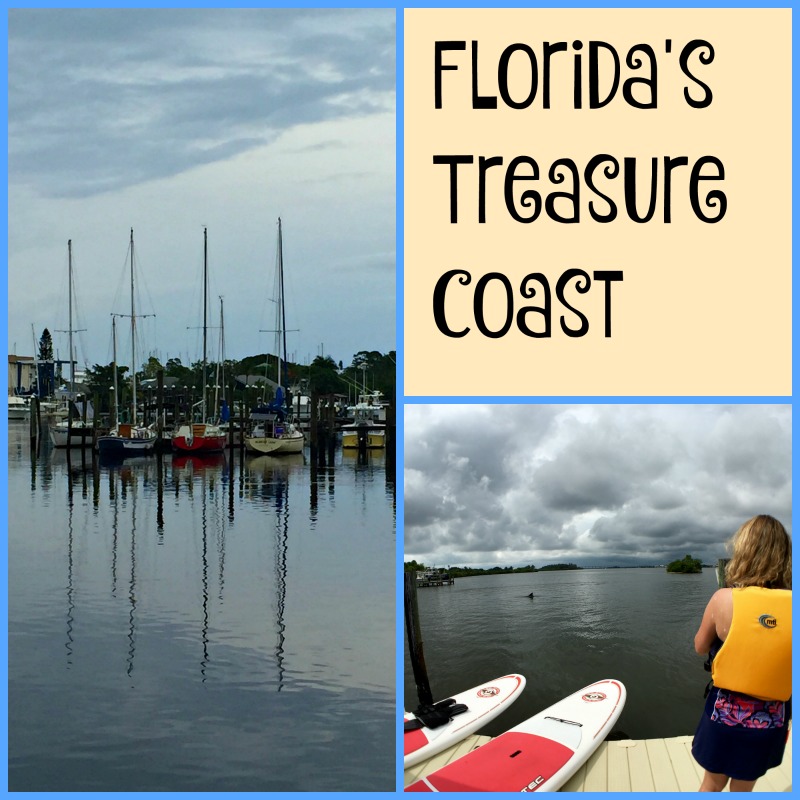
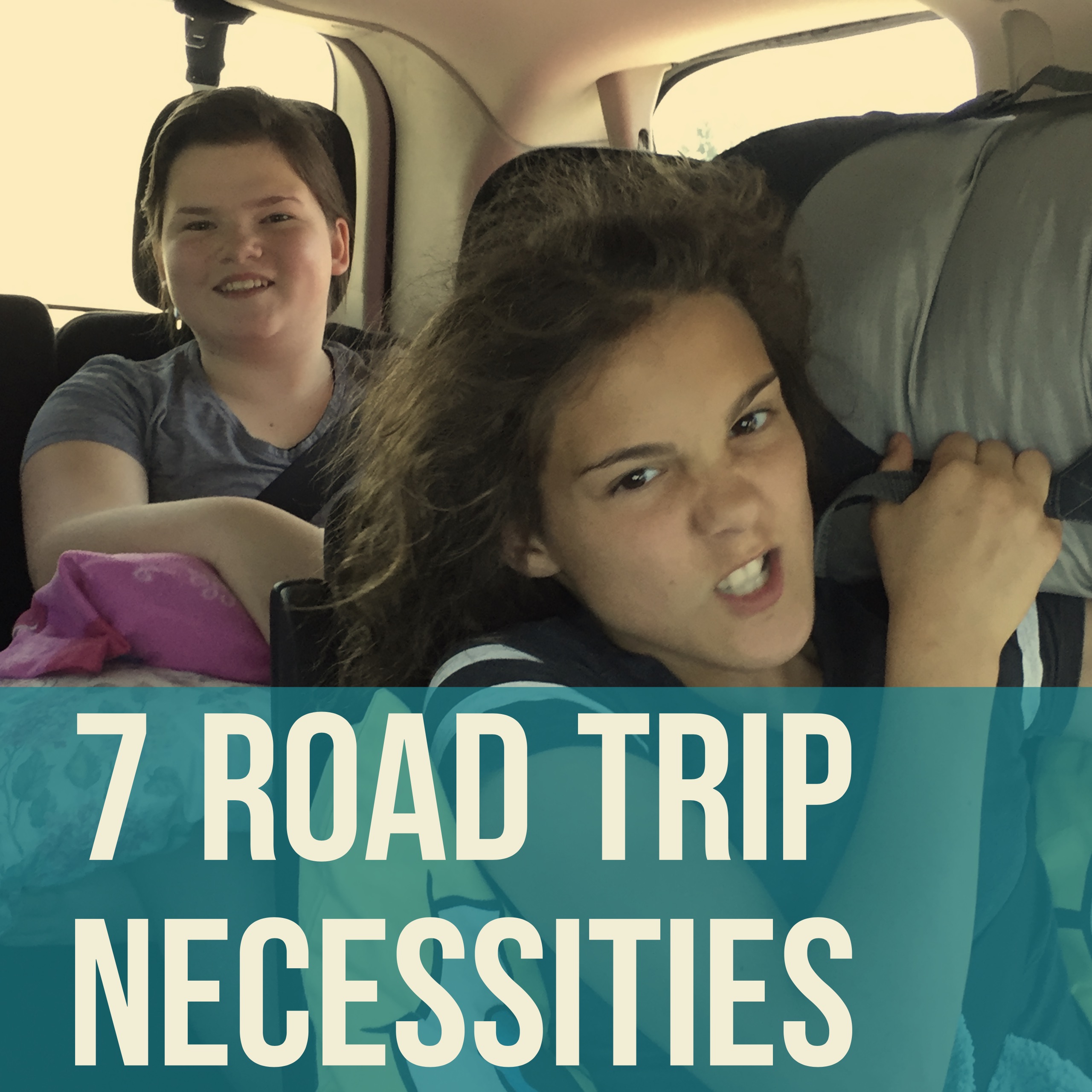
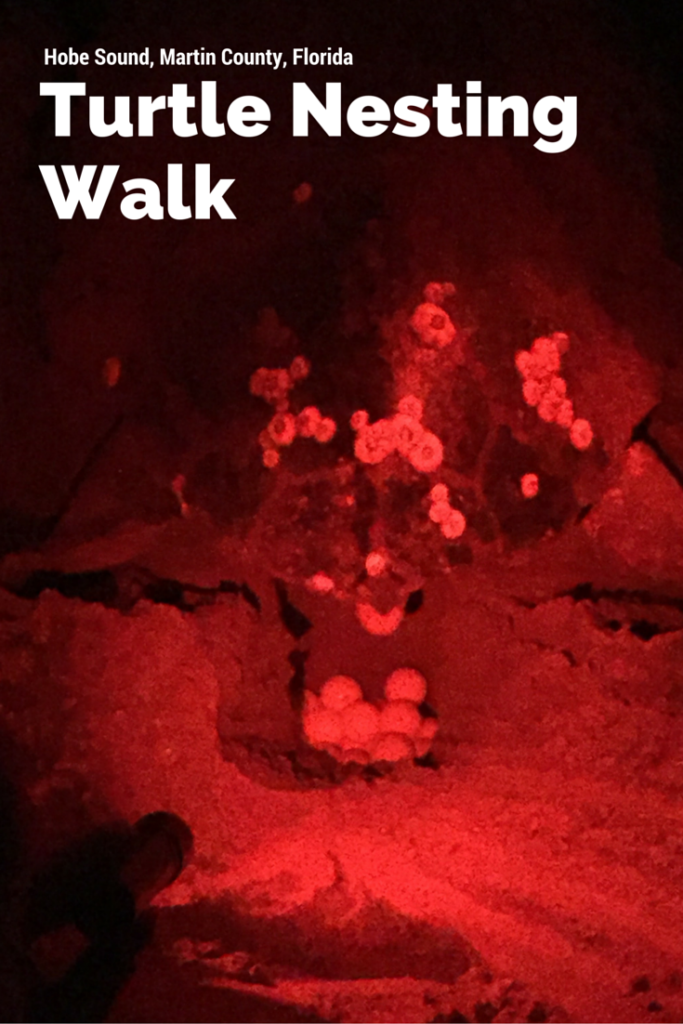
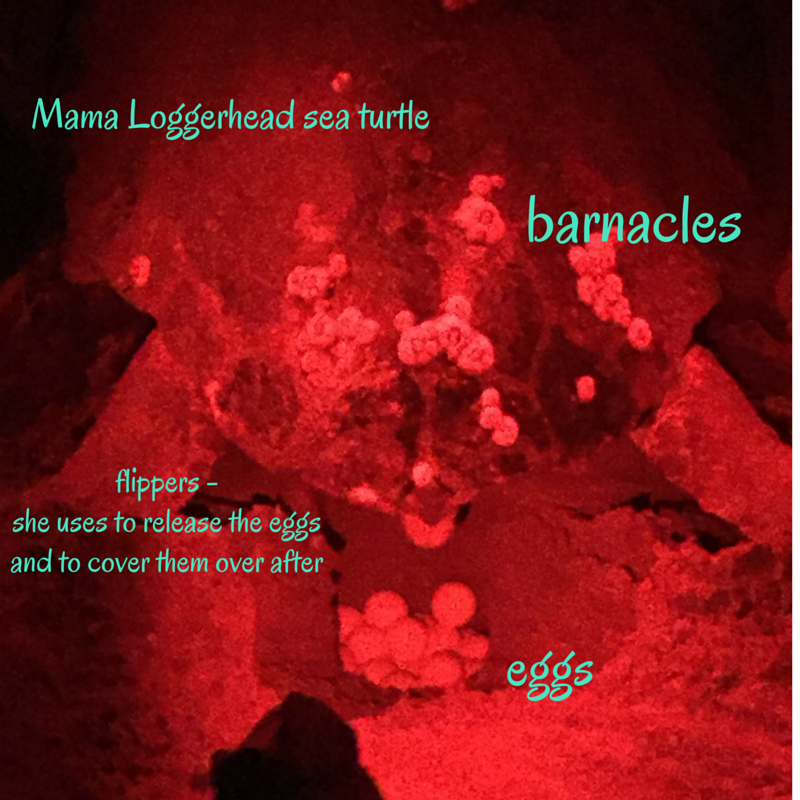




23 Comments
Sarah Bailey
I love that fact that people look out for these turtles so much and make sure they get to and from the nest safely.
Paula
Me too Sarah. It was amazing to see how much they are doing to protect and nurture the species.
Pam
I love sea turtles. Doing a walk like this with a conservationist would be so cool. I think I, adding it to my bucket list.
Kristen from The Road to Domestication
Great info! We were just down at Longboat Key and they were all keeping a watch out for the turtles there, too!
Amanda
How cool is it that 2 of the species were around during the dinosaur era!? We recently went to Dinosaurs Alive at our local zoo and i thought how cool and scary it would have been to be alive at that time!
Lady Lilith
Amazing. It is so much fun to see nature first hand.
Catherine S
What a neat experience to watch. When we go down to my dads’ beach condo over the summer in Englewood, FL we will see turtles on the beach late at night. Now I know what they are doing.
Liz Mays
That sounded like such a cool experience. I’ve never seen turtles lay eggs like that before. It is so cool that the spotters were able to lead your group out to see the turtles!
Heather
I love sea turtles! I remember swimming next to one in Kauai. The nests are all around florida.
Heather Lynne
What an amazing experience, Paula! Something that a lot of people will probably never see!
Rachel Langer
What a unique experience! I would love to do this on my next Florida visit!
Seattle Travel Blogger
This looks like it was a great way to check out some wildlife.
The destination looks awesome.
I was not aware of the sea turtle fact regarding species residing in FL.
Jeanine
This is something I would love to do! I have watched many documentaries on stuff like this and i just think its so neat to see! This would be such an amazing experience!
Crystal McLeod
One of the cutest things ever is when you see the turtles hatching, coming out of the ground and making their way to the water. I would love to see this in real life sometime! Sounds like you guys had a great adventure and I love the tips you included about the flashlight etc.
Paula
Now this is my next great adventure for sure Crystal! I would love to see the babies hatch. My kids would love that so much too.
Suzanne Rudge
Wow, what a wonderful event to participate in! Turtles are such gentle creatures and it is beautiful to see how the whole birthing process is being protected. I can just imagine how awesome it would be to see this up close and personal. Makes me kind of sad the babies and their mama never meet, but I guess nature knows best..
Paula
Mama turtles are just breeding machines it seems. They do this so many times in one year and then they take a break and then the next year back to it and over and over. She could theoretically have thousands of babies. But in reality only a small number survive predators.
Ann Bacciaglia
I love vacationing in Florida. The sea turtle nesting walk would be perfect for me. I love to be out in nature.
Paula
Ann – you would really find this cool I think. Such a learning experience.
CouRTnYlynne
I love turtles and lived in FL for more years than I can remember and had no clue this place was in FL!!! I need to go next time I’m visiting!
Little Miss Kate
That is so cool, what an amazing thing to see. I agree doing this walk with a trained professional is key, people mean well but can do harm.
Lisa Rios
I love sea turtles so much & it is quiet great that they are dedicated to protect the species. I am sure you have had a wonderful experience which I would really wanted to explore myself in real with my kids!
Kelly Hutchinson
What a cool experience! My family is kind of obsessed with turtles, so we would really enjoy this!